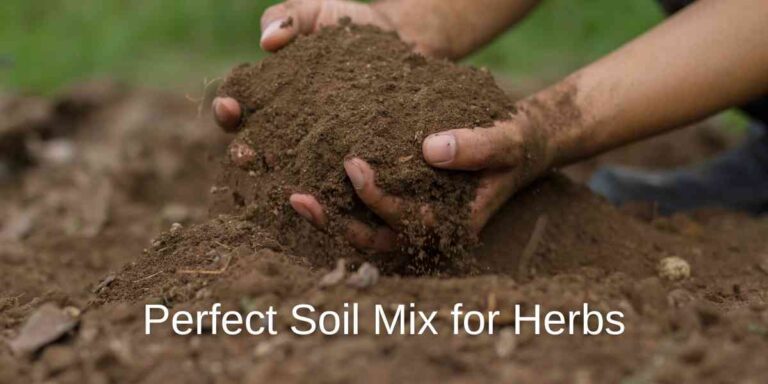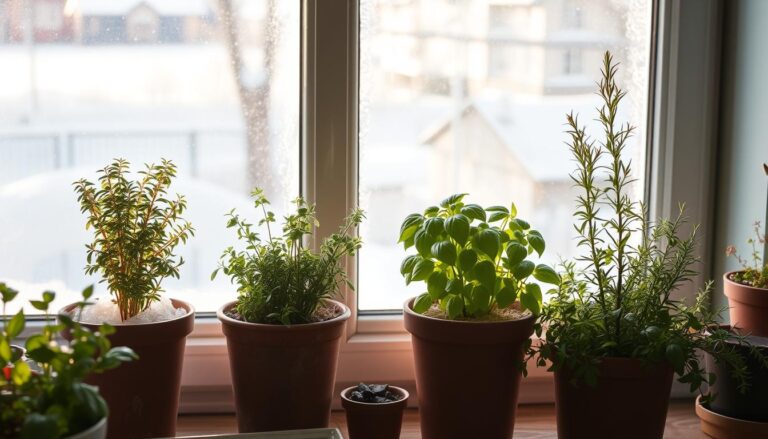Pruning and Harvesting Herbs: A Complete Guide for Your Herb Garden

Introduction
A Beginner’s Guide to Pruning and Harvesting Herbs: Simple Tips for Better Growth
Many people grow herbs at home but feel scared to cut their plants. “What if I cut wrong?” “Will my plant die?” These are common doubts everyone has in the beginning. But cutting herbs properly actually helps them grow better!
Think about going to a hair salon. Just like how a good haircut makes our hair grow better, cutting herbs the right way makes them grow more leaves. This guide will show easy ways to cut and collect herbs from home gardens.
Some people just let their herbs grow without cutting. Then the plants become very tall, give less leaves, and don’t look nice. But with some simple cutting tips, anyone can make their herbs grow bushy and healthy. Plus, regular cutting means more fresh herbs for cooking!
Don’t worry if you never cut herbs before. This guide uses simple steps that everyone can follow. After reading this, cutting herbs will become very easy. Ready to learn how to make herb plants grow better with proper cutting?
Understanding Pruning Basics

Let me tell you what pruning means and why plants need it. Many people get confused when they hear the word pruning. But really, it is very simple to understand.
What is Pruning?
Pruning means cutting our plants in correct way. Just like we go for haircut to look good and stay neat, plants also need cutting to grow better. But we must be careful when cutting. First see if plant is healthy, then take clean scissors, and cut only where needed. If we cut without knowing proper way, plant can get damaged.
Why Herbs Need Pruning
When we cut herbs properly, very good things happen to our plants. You know what happens after cutting? Plant starts growing more branches! More branches means more leaves for our kitchen. If we never cut our herbs, they become too tall like small trees. They look bad and give very less leaves. Also, when herbs grow too tall, they start getting flowers. After flowers come, leaves don’t taste good in food. That’s why cutting herbs at right time is very important.
When to Start Pruning
Many people always ask me – “When should we cut our herbs?” It’s very simple. Wait till your plant grows about 6 inches tall. Morning time is best for cutting because plants are fresh. Don’t cut when sun is very hot or in night time. Before cutting, see if plant looks healthy and has many leaves. If plant looks weak or has very few leaves, wait for some more days.
Simple Steps to Cut Herbs

Now let’s learn how to cut herbs properly. Many people worry they will cut wrong way and harm their plants. But cutting herbs is very easy if we follow some simple steps.
Where to Cut Herbs
First thing to know is where exactly to cut the plant. Look at your herb plant carefully. You will see leaves growing in pairs on the stem. Always cut just above where leaves are growing. See that small joint where leaves meet stem? That’s the best place to cut. Cutting here makes plant grow two new branches instead of one.
How Much to Cut
Don’t remove too many leaves at one time. This is very important. Many people get excited and cut too much – this is not good for plant. Here’s what to do:
- First time cutting: Cut only top part when plant is 6 inch tall
- Regular cutting: Never cut more than half of plant
- Leave at least 3-4 pairs of leaves at bottom
- If plant looks weak, cut less
Easy Steps to Follow
- Take clean scissors
- Look for healthy branches
- Find leaf joints on stem
- Cut just above leaf joint
- Keep collected leaves in clean bowl
- Remove any yellow or black leaves
Common Mistakes People Make
Let me tell you what mistakes people usually make, so you can avoid them:
- Cutting too close to leaves
- Cutting main stem too low
- Taking too many leaves at once
- Using dirty scissors
- Cutting weak plants
- Cutting in hot sun
Some Extra Tips
Want your herbs to have new growth after cutting? Try these simple things:
- Cut in morning time
- Water plant after cutting
- Keep some leaves for plant
- Don’t pull leaves with hand
- Watch plant for few days after cutting
After cutting herbs like this few times, you will become confident. Plants also become stronger and give more leaves. Remember, little careful cutting is always better than no cutting!
Different Herbs, Different Rules

All herbs are not same. Some herbs need different type of cutting than others. Let’s see how to cut different types of herbs properly.
Soft Herbs
Soft herbs like basil, mint, and coriander are very easy to cut. These plants have soft, green stems.
Basil: Most easy to cut. When basil grows 6 inch tall, just cut top part. Cut above leaf joint and soon you will see new branches coming. Basil grows very fast after cutting. But be careful in winter – cut little less that time.
Mint: This one grows like crazy! You can cut mint any time. Even if you cut lot of mint leaves, plant will grow back fast. But one thing to remember – cut old branches completely. Old branches give less tasty leaves. New branches give fresh, tasty leaves.
Coriander: This one needs different care. Cut outer leaves first. Don’t cut middle part of plant. When you see flowers coming, cut whole plant near bottom. Then plant will grow again from bottom.
Woody Herbs
These herbs have hard stems like small trees. They need different cutting style.
Rosemary: Cut only soft, green tips. Don’t cut hard, brown stems. If stems become too hard, plant will not grow new branches there. Cut only after plant becomes big and strong.
Thyme: Very small but strong plant. Cut small branches from top. Don’t cut thick, woody stems at bottom. If plant becomes too big, cut some old branches completely.
Sage: This one grows slow. Cut only top soft parts. If sage becomes too big, cut some old branches in spring time. Don’t cut too much in winter.
Special Things to Remember:
- Soft herbs grow back fast
- Woody herbs need more time
- Never cut all leaves
- Some herbs grow more in summer
- Winter time means less cutting
- Always see how plant looks before cutting
These tips work for most common herbs we grow at home. Different cutting styles help different herbs grow better.
Harvesting and Storing Tips

Morning time is best for picking herbs when they have most taste and smell. Just make sure morning dew has dried up first.
How to Pick Different Herbs
Fresh Herbs Like Basil and Mint: For cooking, pick big leaves near stem joint. Always leave some baby leaves at top. If you need many leaves at once, cut whole branch above leaf joint.
Hard Herbs Like Rosemary and Thyme: Best to snip small branches instead of picking single leaves. Cut soft, green tips only. These give best flavour in cooking.
Storing Fresh Herbs
For Short Time:
- Wash and dry leaves properly
- Put in box with wet paper
- Keep in fridge – good for 4-5 days
For Long Time:
- Tie small bunches with thread
- Hang upside down in dry place
- After drying, store in airtight bottle
Some Extra Tips:
- Pick only what you need
- Store different herbs separately
- Label bottles with date
- Check for any bad leaves before storing
- Use clean containers only
Fresh picked herbs make food taste much better than dried ones from market. With proper picking and storing, we can have fresh herbs ready whenever needed.
Tools and Care to Prune Herbs
Simple tools make herb cutting and picking very easy. Let’s see what basic things we need.
Must-Have Tools
- Sharp scissors
- Best for most herbs
- Easy to control
- Better than kitchen scissors
- Small pruning shears
- Good for thick stems
- Perfect for woody herbs
- Helps make clean cuts
Taking Care of Tools
Clean tools last longer and keep plants healthy. After using:
- Wash with soap water
- Dry properly
- Keep in dry place
- Oil joints sometimes
- Check for rust
Safety Tips
- Keep tools away from rain
- Store in safe place
- Check sharpness
- Replace if very old
- Keep away from children
Good tools make gardening work easy. With proper care, these tools can be used for many years.
Seasonal Guide for Pruning
Different seasons mean different ways of picking and cutting herbs. Here’s what works best in each season.
Summer Time
Hot weather makes herbs grow fast. In summer:
- Cut more often
- Water after cutting
- Herbs dry faster when stored
Winter Care
Plants grow slow in cold weather:
- Cut less in winter
- Let plants keep more leaves
- Dry herbs take more time
- Store carefully to avoid mold
Rainy Season
Be extra careful in rains:
- Don’t cut wet plants
- Pick only when leaves are dry
- Check stored herbs often
- Keep tools extra clean
Best picking times change with weather:
- Summer: Early morning or evening
- Winter: Late morning
- Rainy days: Wait for dry time
- Spring: Any time when dry
With these simple seasonal tips, we can have good herbs throughout the year.
Conclusion
Cutting and picking herbs is really not difficult. Just need to follow some basic rules and soon it becomes very easy. Remember to cut at right places, pick carefully, and keep tools clean.
Important things to remember:
- Morning time is best
- Cut at right spots
- Store properly
- Change style with seasons
Start with one or two herbs. Learn how they grow after cutting. Soon you will see how plants become bushy and give more leaves. Fresh herbs make food taste much better!






